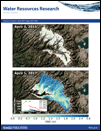Using machine learning to identify hydrologic signatures with an encoder-decoder framework.
Hydrologic signatures are quantitative metrics that describe a streamflow time series. Examples include annual maximum flow, baseflow index and recession shape descriptors. In this paper, we use machine learning (ML) to learn encodings that are optimal ML equivalents of hydrologic signatures, and that are derived directly from the data. We compare the learned signatures to classical signatures, interpret their meaning, and use them to build rainfall-runoff models in otherwise ungauged watersheds. Our model has an encoder–decoder structure. The encoder is a convolutional neural net mapping historical flow and climate data to a low-dimensional vector encoding, analogous to hydrological signatures. The decoder structure includes stores and fluxes similar to a classical hydrologic model. For each timestep, the decoder uses current climate data, watershed attributes and the encoding to predict coefficients that distribute precipitation between stores and store outflow coefficients. The model is trained end-to-end on the U.S. CAMELS watershed data set to minimize streamflow error. We show that learned signatures can extract new information from streamflow series, because using learned signatures as input to the process-informed model improves prediction accuracy over benchmark configurations that use classical signatures or no signatures. We interpret learned signatures by correlation with classical signatures, and by using sensitivity analysis to assess their impact on modeled store dynamics. Learned signatures are spatially correlated and relate to streamflow dynamics including seasonality, high and low extremes, baseflow and recessions. We conclude that process-informed ML models and other applications using hydrologic signatures may benefit from replacing expert-selected signatures with learned signatures.

